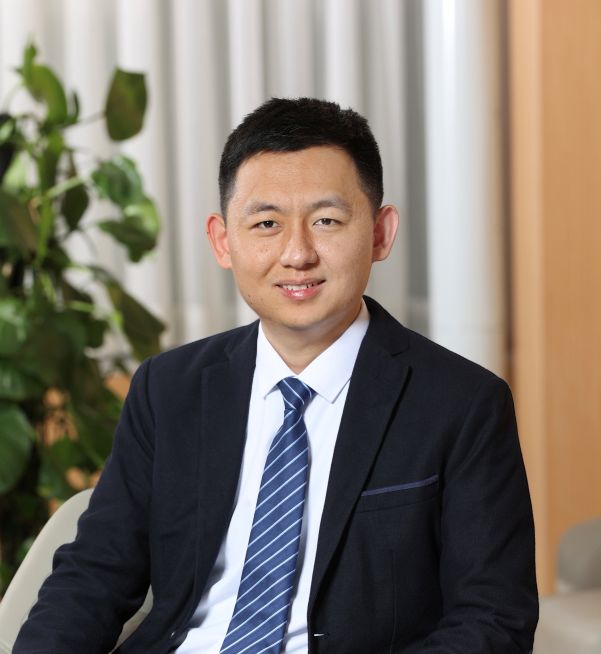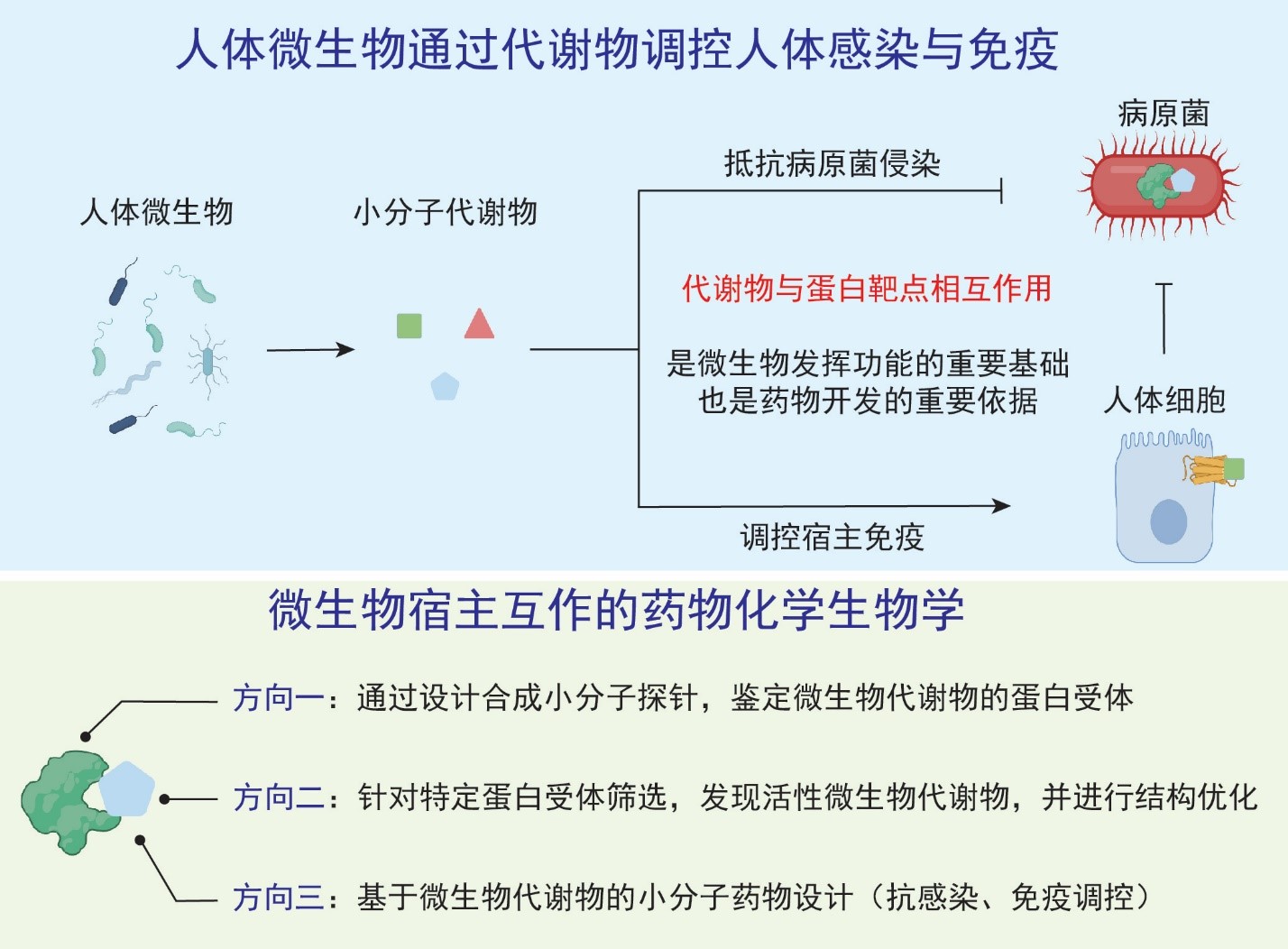

杨兴林,助理教授、研究员、博士生导师
教育及工作经历:
2008.09至2012.06,山东大学药学院,理学学士
2012.08至2017.07,清华大学药学院,理学博士
2018.01至2021.03,洛克菲勒大学,博士后
2021.04至2023.05,Scripps研究所,博士后
2023.06至2024.05,Scripps研究所,研究员
2024.06 至今,北京大学药学院,助理教授
研究方向:微生物宿主互作的药物化学生物学
人体携带着大量的微生物,这些微生物栖息在人体的口腔、肠道、皮肤等不同部位,在人体健康维持和疾病的发生、发展中发挥着重要的作用。人体微生物可以代谢合成一系列结构特异的活性分子,比如胆汁酸代谢物、氨基酸代谢物以及维生素代谢物等。这些活性分子与其靶点蛋白的相互作用是人体微生物发挥功能的重要基础,也是基于人体微生物进行药物开发的重要依据。然而,人们对于人体微生物代谢物的研究尚处于起步阶段:1)很多已知微生物代谢物的蛋白靶点及生物学功能并不明确;2)种类繁杂的人体微生物可以代谢合成大量结构特异的代谢物,目前发现的活性代谢物只是冰山一角。这些问题阻碍了对于人体微生物调控人体生理的分子机制的理解,并制约了基于人体微生物的药物开发。
课题组研究涉及合成化学、化学生物学、细胞生物学、微生物学及免疫学等不同学科,聚焦具有调控人体感染和免疫活性的人体微生物活性分子,从活性分子与靶点蛋白的相互作用切入,开展以下三个方向的研究:1)从已知的重要的人体微生物来源活性分子出发,通过合成活性分子探针和化学蛋白质谱学技术,鉴定其在病原菌以及人体细胞中的蛋白受体;2)从重要的细胞受体出发,系统筛选可以激活这些受体的微生物活性分子,并对其进行化学结构优化;3)基于人体微生物活性分子,进行具有抗感染和免疫调控功能的小分子药物设计。以上研究将促进对于人体微生物调控人体生理和疾病的分子机制的理解,推动具有新靶点、新机制的药物开发。

代表性文章:
1. Yang, X., Hang, H. C., Chemical genetic approaches to dissect microbiota mechanisms in health and disease, Science, 2024, 386, eado8548(invited review)
2. Yang, X., Stein, K. R., Hang, H. C., Anti-infective bile acids bind and inactivate a transcriptional regulatorof Salmonella virulence, Nat. Chem. Biol. ,2022,19, 91. (Highlighted by Pérez-Morales, D.; Bustamante, V. H., Disarming the pathogen. Nat. Chem. Biol. ,2022, 19 , 5-6.)
3.Jiang, S.-Y.*, Yang, X. *, Yang, Z.*, Li, J.-W., Xu, M.-Q., Qu, Y., Tang, J.-J., Li, Y. F., Wang, L., Song, B.-L., Rao, Y., Qi, W. Discovery of a INSIG binding compound that ameliorates nonalcoholic steatohepatitis by inhibiting SREBP-mediated lipogenesis, Hepatology , 2022, 76, 1466 (*Co-author with equal contribution)
4. Yang, X.*, Zhao, X.*, Chen, V.*, Hang, H. C. Chemical proteomic analysis of bile acid-protein targets in Enterococcus. RSC Chem. Biol. ,2022, 3, 1397(*Co-author with equal contribution)
5.Yang, X., Forster, E. R., Darabedian, N., Kim, A. T., Pratt, M. R., Shen, A., Hang, H. C., Translation of microbiota short-chain fatty acid mechanisms affords anti-infective acyl-salicylic acid derivatives. ACS Chem. Biol. ,2020, 15 , 1141
6. Yang, X.*, Chen, X.J.*, Yang, Z.*, Xi, Y.-B., Wang, L.-G., Yan, Y.-B., Rao, Y. Synthesis, evaluation, and structure-activity relationship study of lanosterol derivatives to reverse mutant-crystallin-induced protein aggregation. J. Med. Chem. , 2018, 1 , 8693 (*Co-author with equal contribution)
7. Yang, X.*, Shan, G.*, Yang, Z.,Huang, G., Dong, G., Sheng, C., Rao, Y. One-pot synthesis of quaternary carbon centered cyclobutanes via Pd(II)-catalyzed cascade C(sp3)-H activations. Chem. Comm. , 2017, 53 , 1534 (*Co-author with equal contribution)
8.Yang, X.*, Sun, Y.*, Sun, T.-Y., Rao, Y. Auxiliary-assisted palladium-catalyzed halogenation of unactivated C(sp3)-H bonds at room temperature. Chem. Comm. , 2016, 52 , 6423(*Co-author with equal contribution)
9.Yang, X., Sun, T.-Y., Rao, Y. A preliminary study of diastereoselectivity in the PdII-Catalyzed C(sp3)-H alkoxylation of cyclic systems. Chem. Eur. J. ,2016, 22 , 3273
10. Yang, X., Sun, Y., Chen, Z., Rao, Y. A general approach towards catechol and pyrogallol through Ruthenium- and Palladium-catalyzed C-H hydroxylation by weak coordination. Adv. Synth. Catal. , 2014, 356 , 1625
11. Shan, G.*,Yang, X.*, Zong, Y., Rao, Y. An efficient Palladium-catalyzed C-H alkoxylation of unactivated methylene and methyl groups with cyclic hypervalent Iodine (I3+) oxidants. Angew. Chem. Int. Ed. , 2013, 52 , 13606 (*Co-author with equal contribution)
12. Yang, X.*, Shan, G.*, Rao, Y.Synthesis of 2-aminophenols and heterocycles by Ru-Catalyzed C-H mono- and dihydroxylation. Org. Lett. , 2013, 15 , 2334 (*Co-author with equal contribution)